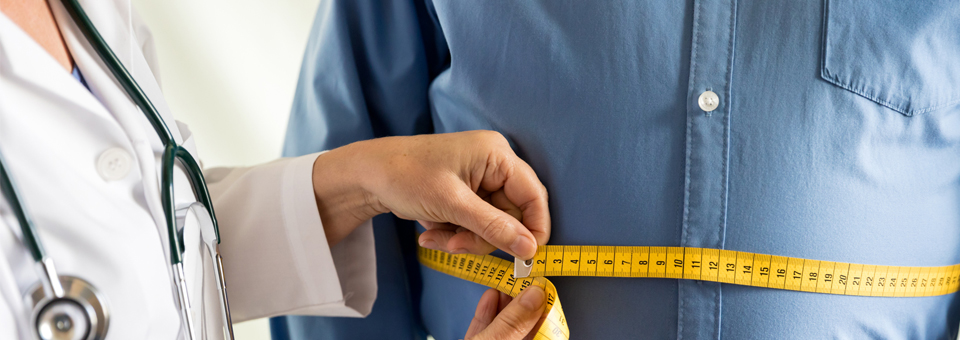
When it came to healthy eating, my grandmother was spot on.
She cooked with bacon grease and butter. We ate farm-raised meat at almost every meal. Pastured eggs and bacon for breakfast was a given.
But there was one area where my grandmother – and many others – followed the wrong advice.
They fed their families three times a day.
But you were NOT designed to eat three meals a day.
And certainly not the six small meals some doctors and dieticians recommend. Let me explain…
For millions of years, people had no regular or reliable food sources. Our primal ancestors feasted when hunting was good.
Then they had to survive periods of famine.
You might think starvation would drain their energy. But in fact, this cycle of feast and famine increased their power. Short bouts of fasting kicked up the energy production in their cells.
You see, fasting works at the cellular level to boost efficiency in your mitochondria. These little organelles in each of your cells extract energy from nutrients you eat. They produce more than 95% of your body’s energy.
Each of your cells has hundreds or even thousands of these little power generators.
But over time, your cellular power plants wear out. They break down. And like old power plants they start to burn dirty. They produce lots of free radicals that lead to what we call the diseases of aging.
With short periods of fasting your body thinks it’s being starved. It goes into survival mode.
It removes unhealthy mitochondria and replaces them with new ones. You start to produce fewer free radicals. And these young mitochondria send your energy production into overdrive.
In other words, your body needs periods of “starvation” to perform important biochemical maintenance.
But the more time you spend eating, the more time your body stays in digestion mode. It’s so busy breaking down food and eliminating waste that it can’t detox and repair itself.
Animal studies show fasting may also extend your lifespan. It may prevent or lessen the severity of cancer, stroke, heart disease, autoimmune disease and allergy.1
Other research shows that regular fasting can have similar benefits for humans.
In one study from the University of Florida 24 people alternated a day of “fasting” with a day of “feasting.” The on-and-off fasting improved weight, blood pressure, heart rate, glucose levels, cholesterol and inflammation. It decreased insulin levels. And it activated the SIRT3 longevity gene. Studies show increases in genes like SIRT3 extend the lifespan of mice.2
And brief periods of fasting can also help you lose weight. English researchers tested a fasting plan in 115 dieters. Half of them cut calories every day. The other half ate regularly five days a week and fasted two days a week. After three months, the fasting group lost twice as much weight as the calorie-cutters.3
That’s why fasting is an important part of my Syndrome Zero protocol. Syndrome Zero is the root of all chronic disease – heart disease, cancer, diabetes, Alzheimer’s, even obesity.
Fasting fights Syndrome Zero by putting you into a fat-burning zone. You see, your body takes 8 to 12 hours to burn off a meal. Only then does it start burning off your fat stores. If you eat every 6 or 7 hours, you’re always burning your last meal. You never get to burning off your fat stores.
Now when I talk about fasting, I’m not talking about starving yourself. Simply cycling between periods of eating and fasting on a daily or weekly schedule gives you the same benefits our primal ancestors had with their feast and famine cycles.
You can do this “intermittent fasting” in several different ways. You can cut calories a couple of days a week or every other day. That will work but it’s not as easy as the method I advise my patients to use.
Eat Like Your Ancestors
I recommend what I call “peak fasting.” You just limit the time – not the amount – you eat every day.
- Ease into fasting. Start by closing the kitchen after dinner. If you eat nothing between 8 p.m. and 8 a.m. you’re already fasting 12 hours a day.
- Then take it a little further. Try eating only during a six- to eight-hour window. Eat either breakfast and lunch, or lunch and dinner. For example, eat your first meal at 11 a.m. and a second before 7 p.m. Or eat breakfast at 8 a.m. and your second meal before 4 p.m.
- Enter your fat-burning mode. By fasting 14 to 16 hours a day, you give your body time to completely burn off your last meal and shift into fat-burning mode. Once your body shifts to burning fat you avoid the hunger pangs, cravings and sugar “highs” and “lows” that come with other diets.
After you finish your fast keep the toxins out of your system. Don’t forget food quality still counts. Avoid sugar and processed foods. Reduce the amount of carbs you eat and make sure you get plenty of healthy proteins. And eat plenty of good fats like avocados, grass-fed butter, coconut oil, eggs and nuts.
To Your Good Health,
![]()
Al Sears, MD, CNS
1 Katsuyasu Kouda, Masayuki Iki. “Beneficial effects of mild stress (hormetic effects): dietary restriction and health.” J Physiol Anthropol; 2010;29(4):127-32.
2 Martin P Wegman et al. “Practicality of Intermittent Fasting in Humans and its Effect on Oxidative Stress and Genes Related to Aging and Metabolism.” Rejuvenation Research, 2014; 141229080855001 DOI: 10.1089/rej.2014.1624.
3 Harvie M et al. “The effect of intermittent energy and carbohydrate restriction v. daily energy restriction on weight loss and metabolic disease risk markers in overweight women.” Br J Nutr. 2013;110(8):1534-47.








